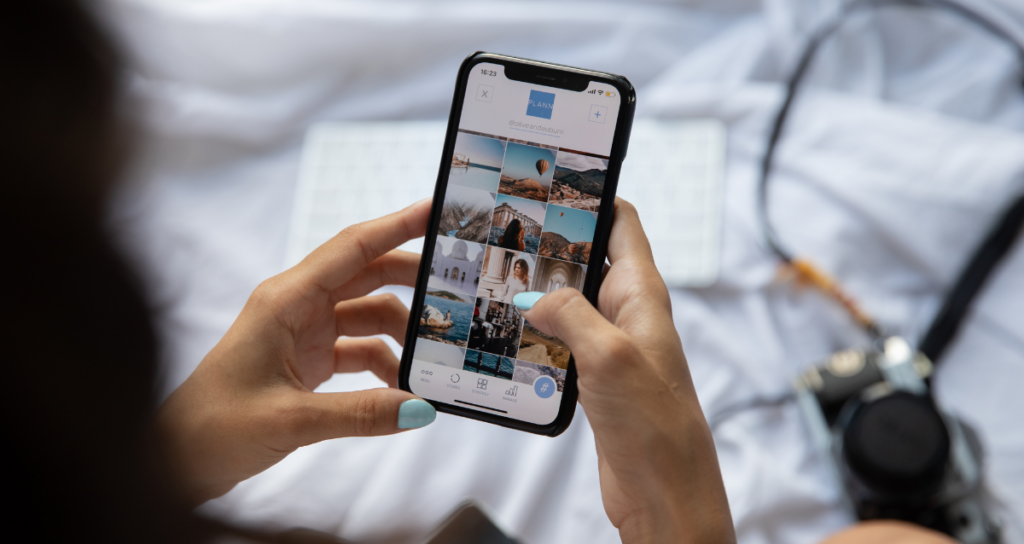Sandy Saputo, Chief Marketing Officer of Fenty Beauty, wrote “The first time we showed the campaign trailer, [we] got very emotional.” The Fenty Beauty campaign is the first-ever global beauty campaign that featured underrepresented and underserved women and cultures. The campaign ended up being named one of Time Magazine’s best inventions of 2017.
Fenty’s founder, Rihanna, set the vision of “Beauty for All.” So the brand launched 40 shades of foundation at the start and expanded to 50 shades. Every shade is crafted so women can find themselves in the brand and feel included.
To make Fenty Beauty available to women everywhere at the same time, the brand worked with over 500 companies to launch the brand in 17 countries and was ready to ship to 137 countries. The goal? Every woman can equally access beauty.
Although Fenty is an inclusive brand, the brand never uses the word “inclusive” in any of its promotional materials. For Fenty, inclusive is not a marketing keyword, it’s a value that everyone embraces.
Fenty Beauty’s brand strategy has had a transformative impact on the cosmetic industry. While other brands have since recognized the need to cater to underrepresented women, Fenty Beauty led the way by demonstrating how to authentically connect with these demographics. They not only identified a gap but also showed the industry how to create and run inclusive campaigns that are culturally relevant and relatable to customers from all backgrounds.
Fenty Beauty’s inclusive marketing approach is a remarkable example of how a brand can redefine an industry by embracing diversity and prioritising inclusivity. Their commitment to emotional engagement, global accessibility, and authenticity in promoting inclusivity sets them apart as a trailblazer in the beauty industry. By focusing on values rather than marketing keywords, Fenty Beauty has successfully created a beauty brand that resonates with people from diverse backgrounds and cultures, making “Beauty for All” a reality.

What is inclusive marketing?
Inclusive marketing refers to the mention of love, family, safety, opportunity and other universal values to encourage resonance in the audience. Thus, the audience will feel valued by the brand and consider its product, service or experience.
One of the defining features of Fenty Beauty’s marketing strategy is its unwavering commitment to inclusivity. Under the leadership of the Chief Marketing Officer (CMO), Fenty Beauty has redefined the beauty industry’s standards by championing diversity, celebrating individuality, and fostering a sense of belonging for all consumers.
Diverse Shade Range
Fenty Beauty made waves in the beauty industry by launching a foundation line with an extensive and diverse shade range from the very beginning. This was a groundbreaking move that catered to a wide spectrum of skin tones, from the palest to the deepest. By acknowledging that beauty is not one-size-fits-all, Fenty Beauty immediately positioned itself as a brand for everyone, regardless of their ethnicity or skin colour.

Representation in Campaigns
Inclusive marketing goes beyond product development; it extends to how a brand represents its customers. Fenty Beauty has consistently featured models and ambassadors from various racial backgrounds, sizes, and genders in their advertising campaigns. This choice not only reflects the brand’s commitment to diversity but also allows consumers to see themselves represented in the beauty industry, fostering a deeper emotional connection with the brand.
Listening to the Community
Fenty Beauty actively listens to its customers and responds to their needs. Through social media and other channels, they encourage open dialogue and feedback from their audience. This approach allows the brand to adapt and evolve its product offerings and marketing strategies based on real consumer insights, ensuring that it remains inclusive and relevant.
Collaborations with Diverse Influencers
The brand has also collaborated with a range of beauty influencers and makeup artists who represent a wide spectrum of backgrounds. These collaborations not only bring unique perspectives to the table but also emphasise that beauty knows no boundaries.
Accessibility
Inclusivity also extends to accessibility. Fenty Beauty has made its products available in numerous countries and regions, striving to ensure that everyone can access their products, irrespective of their location.
Transparency
Fenty Beauty is transparent about its commitment to inclusivity, and this transparency is key to building trust with its audience. By openly discussing their efforts to cater to all consumers, they create a sense of authenticity that resonates with customers who appreciate brands that are genuinely inclusive.

Integration into the marketing strategy
Inclusive marketing isn’t just a buzzword for Fenty Beauty; it’s a fundamental part of their brand identity and marketing strategy. By recognizing and celebrating the diverse beauty of their customers, the CMO and the brand as a whole have successfully created a movement that has had a profound impact on the beauty industry, encouraging other brands to follow suit. Inclusive marketing isn’t just about selling products; it’s about empowering and embracing individuals and making them feel seen and valued, and Fenty Beauty excels in this regard.
As we delve deeper into the brand’s marketing strategy, it becomes clear that inclusivity isn’t just a checkbox but a guiding principle that influences every aspect of its approach, from product development to advertising and beyond. In doing so, Fenty Beauty sets an example for other brands, proving that embracing diversity isn’t just a moral imperative; it’s a smart business move that can lead to tremendous success and customer loyalty.
Fenty Beauty’s marketing strategy has pioneered the way for inclusive marketing in the beauty industry. Their unwavering dedication to diversity and representation has not only set them apart but has also reshaped the industry’s standards. By focusing on inclusivity, Fenty Beauty has created a beauty empire that truly celebrates the uniqueness of every individual, redefining what beauty means in the 21st century.





